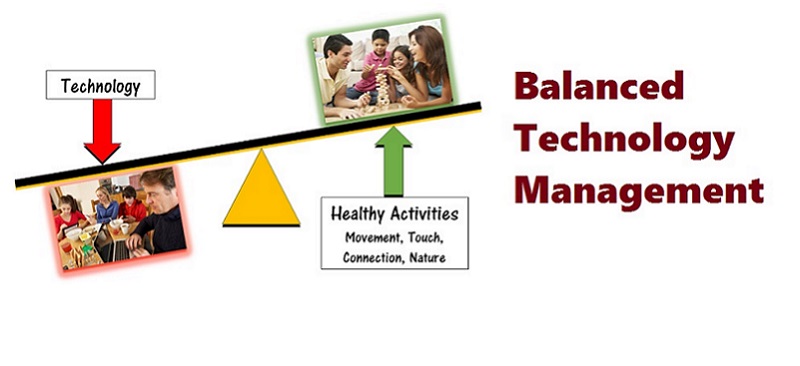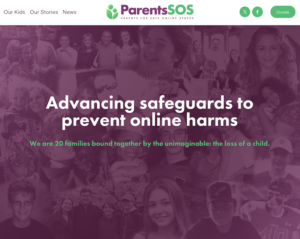For Parents, Teachers, Health Professionals, Governments, Researchers and Technology Production Corporations
Children engage in an average of 7.5 hours and teens 9.0 hours per day of entertainment technologies (television, movies, video games, internet, tablets, cell phones), causing health impairments and delays in development adversely affecting student productivity in school (Kaiser Foundation 2010/15, Takeuchi 2016). 14.3% of children have a diagnosed mental illness (Waddel 2007, CDC 2013), 30% enter school developmentally delayed (Carley, HELP EDI Mapping 2009, 2013, Houtrow 2014), 25% are obese (WHO 2015, Jackson 2009) of whom one third will go on to develop diabetes (CDC 2013), and 10% are addicted to technology (Gentile 2009). Meta-analysis demonstrates that child aggression is causally related to media violence (Anderson 2008, 2010) resulting in complex and often confusing child behaviors in classrooms and at home. Elementary schools are allowing tablets and cell phones to take precedence over playgrounds, recess and gym time (Rowan 2010), removing the only opportunity for physical activity, social contact with peers, and access to the attention restorative aspects of nature (Kuo 2004). Sedentary, overstimulated, isolated, and neglected, today’s child is struggling to survive. The ways in which we are raising and educating children with technology are no longer sustainable, requiring immediate attention and planning for wide scale intervention. The Balanced Technology Management concept proposed in this article details a new paradigm shift toward managed balance between technology and healthy activities. Designed for six target sectors including parents, teachers, health professionals, government, researchers, and technology production corporations, Balanced Technology Management is a team-based answer for the salient question of ensuring sustainable futures for all children who use technology.
Connection to technology has disconnected children from four critical factors needed to grow and succeed: movement, touch, human connection, and nature (Rowan 2010). Research demonstrates movement improves attention and learning (Ratey 2008). Stimulation to a child’s vestibular, proprioceptive and tactile sensorimotor systems promote development of core stability, bilateral coordination of the body and eyes, praxis (ability to perform planned movement patterns), as well as achievement of optimal arousal states for learning (Rowan 2010). Playgrounds, gyms and classrooms require re-design to ensure children receive adequate sensory stimulation to optimize sensory and motor development to enhance attention and learning. Touch activates the parasympathetic system, lowering adrenalin and cortisol and promoting relaxation and calming (Montagu 1978). Human connection is life sustaining (Insel 2001) without which, children die. Nature has been proven to be the most effective attention restorative agent available, with outdoor play proposed as a counteragent to technology overuse (Faber-Taylor 2004, Rowan 2010).
To assist with implementation of Balanced Technology Management initiatives, the following guidelines for technology use by children and youth were developed by Cris Rowan, pediatric occupational therapist, Dr. Andrew Doan, neuroscientist, and Dr. Hilarie Cash, Director of reSTART Internet Addiction Recovery Program with contribution from the American Academy of Pediatrics and the Canadian Pediatric Society (Rowan, 2014).
Please click on image to enlarge.
Balanced Technology Management partnerships between Zone’in Programs Inc. and children, parents, teachers, health professionals, government sectors, researchers, and technology production corporations, will serve to enact necessary social change to ensure the future sustainability and success of children everywhere. The following Balanced Technology Management Initiatives are proposed for 2016/17. Outcomes measures are decreased obesity/diabetes, enhanced developmental milestones, decreased child mental illness and use of psychotropic medication, decreased child aggression, improved academic performance, and increased child literacy.
Children – Hyperarousal from technology results in inability to self-regulate energy states. Overuse of technology in schools displaces time spent that used to be spent teaching printing, reading and numerical literacy. Technology addiction prevents development in skill and confidence in alternate activities. Zone’in, Move’in and Unplug’in Programs address issues associated with technology overuse, and are designed to promote long term success through enhanced self-regulation, literacy, and skill confidence. BTM and Children brochure. Home, school and community-based programs such as Crash-N-Bump and Gym Rocks build motor, sensory, and social skills.
Parents – In this busy and frazzled world, parents are finding it increasingly difficult to manage family use of technology. Often used as a soother or babysitter, technology has replaced time spent building family relationships. When families focus on increasing engagement in healthy activities, technology use decreases. Tech Talks for Families webinar series provide information, tools and strategies to manage balance between healthy activity and technology. Zone’in pediatric occupational therapists provide assistance to families through assessing and treating child sensory, motor, and attachment impairments. BTM and Parents Consultation brochure.
Teachers– School classroom management is fraught with student aggression, poor self-regulation, illiteracy, attention deficit, and learning difficulties. Six half day Foundation Series Workshops offer knowledge, tools and techniques to bring students and schools into a successful new millennium. Live’in Resource Guide maps a school-based BTM program. Zone’in pediatric occupational therapists come to your school to provide professional CEU workshops, as well as assess and treat students with self-regulation, printing and learning difficulties. Low on funding? Get the new Zone’in OT in a Box and teachers can do their own OT assessments and interventions! BTM and Educators Consultation brochure.
Health Professionals – In clinical settings, health professionals are struggling with rising levels of child mental and physical impairments, many of which are related to technology overuse. Tech Talks for Therapists webinar series provide health professionals strategies to assess and treat technology overuse, as well as educate and assist parents to manage balanced technology. TECHS NO Rx pad is a time effective and useful tool. Zone’in pediatric occupational therapists come to your facility to provide education and training for clinicians in the area of technology overuse/addiction assessment and treatment interventions, BTM and Health Care Professionals Consultation brochure.
Researchers – Collating and interpreting research for the general public is essential to ensure symptoms associated with technology overuse are adequately detected and treated. Unplug-Don’t Drug Initiative. Cris Rowan’s Zone’in Fact Sheet provides pediatric researchers with over 300 topically organized research references on the impact of technology on children. Partnering with child health organizations and pediatric researchers to provide consultation and support, Zone’in CEO Cris Rowan fosters continued quality education regarding the impact of technology on children. BTM and Researchers Consultation brochure.
Government – Technology impacts on multiple domains of family function, requiring health, education and social government team together to enact child sustainability initiatives. Creating Sustainable Futures Program. Legislation and regulation of technology products and usage guidelines are urgently required. Ten reasons why handheld devices should be banned for children under the age of 12. BTM consultative services for Education, Health and Social Ministries regarding technology policy and legislation for children, work toward optimizing child health and academic performance. BTM and Government Consultation brochure.
Technology Corporations – Often targeted as part of the problem, technology production (and pharmaceutical) corporations can be part of the solution by supporting and funding child health initiatives. Linking Corporations to Communities Initiative. BTM consultative services for technology production corporations regarding risk management, consumer education, and modification to technology design, ensure child safety and optimizes child health and academic performance. BTM and Technology Corporations Consultation brochure.
Balanced Technology Management Champion Status
Schools, governments, researchers, and technology production corporations who achieve Balanced Technology Management initiatives outlined in respective brochures, will receive Zone’in Balanced Technology Management Champion Status. BTM Champion Status is a seal of approval that can be placed on websites or product literature, assuring parents that the school or technology product in question, meets the minimum health and academic standards for balanced technology management use by children.
Should your organization wish to participate with Cris Rowan and Zone’in Programs Inc. in implementation of Balanced Technology Management Initiatives, please contact Cris Rowan at crowan@zonein.ca to arrange a meeting, or book a Balanced Technology Management Consultation session online now.
Supporting Research
Anderson, C. A., Sakamoto, A., Gentile, D. A., Ihori, N., Shibuya, A., Kobayashi, M. (2008). Longitudinal effects of violent video games on aggression in Japan and the United States. Pediatrics, 122(5), 1067-1072. doi:10.1542/peds.2008-1425
Anderson, C. A., Shibuya, A., Ihori N., Swing, E. L., Bushman, B. J., Sakamoto, A., Rothstein, H. R., Saleem, M. (2010). Violent Video Games Effects on Aggression, Empathy, and Prosocial Behaviors in Eastern and Western Countries: A Meta-Analytic Review. Psychological Bulletin 136(2), 151-173.
Boston College University. (2013, May 8). Lack of sleep blights pupils’ education. BBC News. Retrieved from: http://www.bbc.com/news/business22209818
Carley, L., & Human Early Learning Partnership. (2013). Early Development Instrument (EDI)-VCH Background Document. 1-39.Retrieved from: http://www.vch.ca/media/VCH_EDI_Background_Document_March_2013(1).pdf
Centers for Disease Control and Prevention. (2013). Children’s Mental health-New Report. Retrieved from: http://www.cdc.gov/features/childrensmentalhealth/
Faber Taylor A, Kuo FE, Sullivan WC. Coping With ADD – The Surprising Connection to Green Play Settings. Journal of Environment and Behavior. 2001; 33(1):54-77.
Gentile, D. (2009). Pathological video-game Use among youth ages 8 to 18: A national study. Psychological Science, 20(5), 594-602. doi: 10.1111/j.1467-9280.2009.02340.x
Insel TR, Young LJ. The neurobiology of attachment. Nature Reviews Neuroscience. 2001; 2: 129-136.
Kaiser Foundation Report. 2010. Retrieved on April 30, 2010 from http://kff.org/other/event/generation-m2-media-in-the-lives-of/
Jackson, D. M., Djafarian, K., Stewart, J. & Speakman, J. R. (2009). Increased television viewing is associated with elevated body fatness but not with lower energy expenditure in children. American Journal of Clinical Nutrition, 89, 1031-1036. doi:10.3945/ajcn.2008.26746.
Kuo FE, Faber Taylor A. A Potential Natural Treatment for Attention-Deficit/Hyperactivity Disorder: Evidence from a National Study. American Journal of Public Health. 2004; 94(9):1580-1586.
Rowan, C. (2010). Unplug – Don’t Drug: A critical look at the Influence of technology on child behavior with an alternative way of responding other than evaluation and drugging. Ethical Human Psychology and Psychiatry, 12(1), 60-67. doi:10.1891/1559-4343.12.1.60
Rowan, C. (2014) Technology Usage Guidelines for Children and Youth. Retrieved from: http://www.zonein.ca/Technology%20Use%20Guidelines%20for%20Children%20and%20Youth%20-%20Healthy%20Tips.pdf
Waddell C, Hua JM, Garland O, DeV. Peters R, McEwan K. Preventing Mental Disorders in Children: A Systematic Review to Inform Policy-Making. Canadian Journal of Public Health. 2007; 98(3): 166-173.
Ratey JJ, Hagerman E (2008). Spark: The Revolutionary New Science of Exercise and the Brain. Little, Brown and Company, New York.
Biography
Cris Rowan is an impassioned occupational therapist who has first-hand understanding and knowledge of how technology can cause profound changes in a child’s development, behavior and their ability to learn. Cris received her Bachelor of Science in Occupational Therapy in 1989 from the University of British Columbia, as well as a Bachelor of Science in Biology, and is a SIPT certified sensory integration specialist. Cris is a member in good standing with the BC College of Occupational Therapists, and an Approved Provider with the American Occupational Therapy Association and Autism Community Training. For the past 30 years, Cris has specialized in pediatric rehabilitation, working for over a decade in the Sunshine Coast School District in British Columbia. Cris serves on the Institute for Digital Media and Child Development and the Canadian Association for Occupational Therapists Sensory Processing Disorder committees.
Cris is CEO of Zone’in Programs Inc. offering products, workshops, training, and consultation services to improve child health and enhance academic performance. Cris designed Zone’in, Move’in, Unplug’in and Live’in educational products for elementary children to address the rise in developmental delays, behavior disorders, and technology overuse. Cris has performed over 250 Foundation Series Workshops internationally on topics such as sensory integration and self-regulation, fine motor development and printing, attachment and addictions, technology balance, movement and nature for learning, and school design for success. Cris has recently created Zone’in Training Programs to train other pediatric occupational therapists to deliver these integral workshops in their own community. Cris is an expert reviewer for the Canadian Family Physician Journal, authors the monthly Zone’in Child Development Series Newsletter and is author of the following initiatives: Unplug – Don’t Drug, Creating Sustainable Futures Program, and Linking Corporations to Community. Cris is also author of the book Virtual Child – The terrifying truth about what technology is doing to children.
Cris Rowan, BScOT, BScBi, SIPT, Approved Provider for CAOT and AOTA
CEO for Zone’in Programs Inc. and Sunshine Coast Occupational Therapy Inc.
6840 Seaview Rd. Sechelt, BC, Canada V0N3A4
604-885-0986 p, 604-740-2264 c, 604-885-0389 f
crowan@zonein.ca, www.zonein.ca
© Zone’in Programs Inc. January 2016





